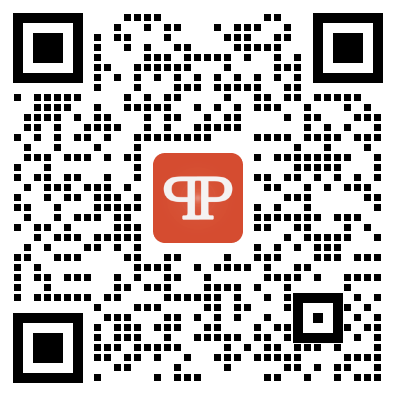Python操作使用MySQL数据库的实例代码
Python 操作 MySQL
配置
win_64 Ubuntu14.04 Python3.xpip安装pymysql模块
直接使用pip安装 pip install pymysql
win64上直接在cmd中执行
连接本地数据库
使用模块pymysql连接数据库
#!/usr/bin/python
# coding=utf-8
import pymysql
# 连接本地数据库
conn = pymysql.connect(host='localhost', port=3306, user='root', passwd='a123', db='samp_db1', charset='utf8')
cursor = conn.cursor()
cursor.execute('select * from bigstu')
for row in cursor.fetchall():
print(row)
# 查
cursor.execute('select id, name from bigstu where age > 22')
for res in cursor.fetchall():
print(str(res[0]) + ", " + res[1])
cursor.close()
print('-- end --')
输出:
(1, '张三', '男', 24, datetime.date(2017, 3, 29), '13666665555') (6, '小刚', '男', 23, datetime.date(2017, 3, 11), '778899888') (8, '小霞', '女', 20, datetime.date(2017, 3, 13), '13712345678') (12, '小智', '男', 21, datetime.date(2017, 3, 7), '13787654321') 1, 张三 6, 小刚 -- end --
可以直接执行sql语句。获得的结果是元组。
增
插入数据
插入一条数据,接上面的代码
insertSql = "insert into bigstu (name, sex, age, mobile) values ('%s','%s',%d,'%s') "
xiuji = ('秀吉', '男', 15, '13400001111')
cursor.execute(insertSql % xiuji)
conn.commit() # 别忘了提交
添加列
在mobile后面添加一列cash
addCo = "alter table bigstu add cash int after mobile" cursor.execute(addCo)
如果要设置默认值
addCo = "alter table bigstu add cash int default 0 after mobile" cursor.execute(addCo)
删
删除数据
删除 name=秀吉 的数据
deleteSql = "delete from bigstu where name = '%s'" cursor.execute(deleteSql % '秀吉')
删除列
删除cash列
dropCo = "alter table bigstu drop cash" cursor.execute(dropCo)
改
修改数据
更新符合条件的数据
updateSql = "update bigstu set sex = '%s' where name = '%s'"
updateXiuji = ('秀吉', '秀吉') # 秀吉的性别是秀吉
cursor.execute(updateSql % updateXiuji)
conn.commit()
事物处理
给某个记录的cash增加
table = "bigstu"
addCash = "update " + table + " set cash = cash + '%d' where name = '%s'"
lucky = (1000, "秀吉")
try:
cursor.execute(addCash % lucky)
except Exception as e:
conn.rollback()
print("加钱失败了")
else:
conn.commit()
直接执行SQL语句,十分方便
代码片段
给数据库添加列
从json中读取需要添加的列名,获取当前2个表中所有的列名
整理得出需要插入的列名,然后将列插入到相应的表中
import pymysql
import json
import os
import secureUtils
mapping_keys = json.load(open("key_mapping_db.json", "r"))
db_keys = [] # json中所有的key
for k in mapping_keys.values():
db_keys.append(k)
conn = pymysql.connect(host='localhost', port=3306, user='root',
passwd='*****', db='db_name', charset='utf8')
cursor = conn.cursor()
table_main = "table_main"
main_table_keys = [] # 主表的列名
cursor.execute("show columns from " + table_main)
for row in cursor.fetchall():
main_table_keys.append(row[0])
staff_table_keys = []
cursor.execute("show columns from table_second")
for row in cursor.fetchall():
staff_table_keys.append(row[0])
need_to_insert_keys = []
for k in db_keys:
if k not in staff_table_keys and k not in main_table_keys and k not in need_to_insert_keys:
need_to_insert_keys.append(k)
print("need to insert " + str(len(need_to_insert_keys)))
print(need_to_insert_keys)
for kn in need_to_insert_keys:
print("add key to db " + kn)
cursor.execute("alter table staff_table add " + kn +" text")
conn.close()
将字段字符改变
这里将main_table_keys中的所有字段改为utf8
# change column character set to utf8 for co in main_table_keys: change_sql = "alter table " + table_main + " modify " + co + " text character set utf8" print(change_sql) cursor.execute(change_sql)
以上就是本文的全部内容,希望对大家的学习有所帮助,也希望大家多多支持积木网。
python爬虫入门教程--优雅的HTTP库requests(二)
前言urllib、urllib2、urllib3、httplib、httplib2都是和HTTP相关的Python模块,看名字就觉得很反人类,更糟糕的是这些模块在Python2与Python3中有很大的差异,如果
Python爬虫之模拟知乎登录的方法教程
前言对于经常写爬虫的大家都知道,有些页面在登录之前是被禁止抓取的,比如知乎的话题页面就要求用户登录才能访问,而登录离不开HTTP中的Cookie技
Python 含参构造函数实例详解
本篇博文主要介绍在Python3中如何构造含参构造函数样例如下:classMyOdlHttp:username=''password=''def__init__(self,username,password):self.username=usernameself.password=passwordp

